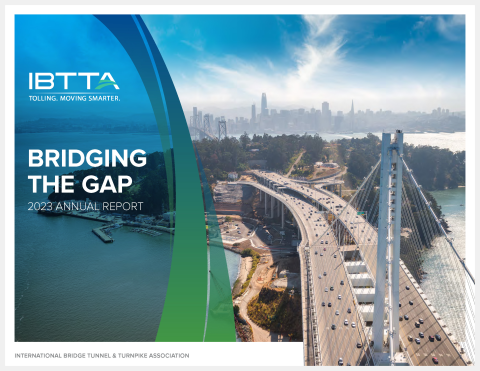- Home
- IBTTA Insights
- The Future of Road Safety? How Satellite Technology is Transforming Transportation
Voices
The Future of Road Safety? How Satellite Technology is Transforming Transportation


In an age where road accidents still claim over a million lives annually (1.19 million in 2023, according to WHO statistics), despite huge technological advances in both automotive- and road safety, the urgency for innovative solutions has never been greater; Vision Zero aims at eliminating traffic-related deaths and is supported world-wide.
While traditional road safety measures, such as traffic signals (even intelligent ones) have played their part in the global road safety efforts, they are no longer enough. Enter satellite-based road safety technology—a game-changing approach that is reshaping how we monitor, manage, and mitigate road risks, keeping a watchful eye on traffic and incidents from 2,000 km above us in Medium Earth Orbit.
With the recent advent of AI-powered traffic management and incident detection platforms, a wave of innovative developments is significantly reducing the numbers of fatalities and serious injuries on our road networks. Now, traffic safety is being elevated to new heights – quite literally. Some experts are confident in their belief that this is the biggest improvement in road safety since the invention of the seatbelt.
The Evolution of Road Safety Technology
For decades, road safety relied on reactive measures: analyzing accident-prone areas, deploying police patrols, and using CCTV surveillance. But these approaches have limitations - they depend on ground-level infrastructure, cannot provide real-time oversight everywhere, and often only offer insights after an accident has occurred.
Satellite technology changes the equation. By leveraging geospatial data, advanced imaging, and real-time connectivity, we can now take a proactive approach to road safety. Instead of waiting for accidents to happen, we can predict, prevent, mitigate and manage risks more effectively than ever before.
European Space Agency’s Business Applications and Space Solutions (BASS) Programme is exploring the possibilities of using space technologies. Advanced road traffic management solutions company Valerann, will support the development of an AI- and satellite-data-enabled traffic monitoring and incident detection platform, designed to enhance nationwide road network safety and efficiency. The initiative aligns with the BASS programme’s objective of supporting the creation of innovative services that leverage space technology and data in key markets, such as transportation. It is also aligned with the EU Global Gateway Strategy’s aims for seamless, sustainable, and environmentally friendly international corridor management.
This new transformational offering will feature crucial capabilities for managing national-scale road networks, including:
- Comprehensive coverage of traffic and road assets monitoring,
- Enhanced risk management and improved incident detection,
- Extension of real-time monitoring capabilities to underserved rural roads that often lack advanced systems.
In 2019, 931 people were killed on Britain’s rural road network, compared to 100 on motorways, highlighting the need to focus on A-, B-, and unclassified roads.
Investing in real-time traffic monitoring for rural areas and for highways is equally important as it can significantly improve safety, efficiency, and emergency response times. Satellite positioning information derived from mobile and vehicle navigation applications will play a key role in enabling these capabilities.
How Satellites Are Making Roads Safer
Real-Time Traffic Monitoring and Hazard Detection
High-resolution satellite imagery, combined with AI-powered analytics, can detect congestion patterns, monitor accident hotspots, and identify road hazards such as landslides, floods, or damaged infrastructure. Governments and traffic management centers can use this data to issue early warnings, adjust traffic flows, and prevent potential disasters before they unfold.
Enhanced Navigation and Driver Assistance
GPS technology has already revolutionized navigation but now, with advancements in satellite connectivity, we’re entering a new era of vehicle safety. Precise lane guidance, real-time hazard alerts, and dynamic route adjustments are all possible thanks to satellites, reducing the chances of human error - a leading cause of accidents.
Improved Emergency Response
In an accident, every second counts. Satellite technology enables emergency responders to pinpoint accident locations with extreme accuracy, even in remote areas. With integrated vehicle telematics, automatic distress signals can be sent to emergency services, ensuring quicker response times and potentially saving lives.
Smart Infrastructure and Predictive Maintenance
Many road accidents are caused by poor infrastructure, such as potholes or badly designed intersections. Satellites can provide continuous monitoring of roads, detecting wear and tear long before it becomes a critical safety issue. This allows for predictive maintenance, reducing risks, and optimizing government spending on repairs.
Autonomous Vehicles and the Road to Zero Fatalities
The future of road safety is autonomous. Self-driving cars rely heavily on satellite data for precise positioning, real-time updates, and seamless communication with smart infrastructure. As these technologies advance, we move closer to a world where human error – responsible for 94% of crashes – is eliminated, and road fatalities become a thing of the past.
Overcoming Challenges and Embracing the Future
Satellite-based road safety isn’t without its challenges. Data security, privacy concerns, and the need for widespread adoption are valid issues that must be addressed. However, the benefits far outweigh the potential hurdles.
Governments, technology providers, and transportation agencies (both surface- and space-focused) must collaborate to harness the full potential of satellite-based road safety. Investments in geospatial analytics, real-time connectivity, and AI-driven decision-making will pave the way for smarter, safer roads worldwide.
Road safety is no longer just about timely warnings on variable message signs – it’s about leveraging the power of space technology to protect lives on Earth. Satellite technology is set to be the ultimate guardian of our roads, providing real-time intelligence, predictive insights, and life-saving innovations.
The question is no longer if we should embrace satellite-based road safety technology, but how quickly we can scale it to save lives. The future of transportation depends on it.

Michael is the Co-founder and CBO of Valerann, an ITS start-up that enables road operators to leverage diverse mobility data to make real-time decisions. Todate, Valerann has been deployed in 7 countries and has raised ±$25M USD. Before Valerann Michael worked in the Israeli Government helping government organisations undergo data transformations and was a strategic consultant at BCG focusing on automotive and transport. Michael holds an MBA from LBS.
Olga is VP of Marketing for Valerann. She brings over 20 years of global experience in the technology sector, having held a range of senior roles in marketing and strategy with some of the most innovative and leading technology companies, such as Microsoft, arm, Intel, Nokia, SAP, SUSE and Canon in the US and Europe. In her role, Olga leads global marketing function for Valerann, including engagement with governments and industry bodies and execution of the company’s marketing strategy.
Joining IBTTA connects you to a global community of transportation professionals, offering unmatched opportunities for networking, knowledge-sharing, and collaborative innovation in the tolling and transportation sector.
Follow IBTTA on social media for real-time updates on transportation trends and collaborative opportunities.





